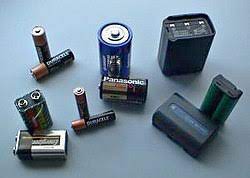Electric Battery:

The electric battery serves as a portable source of electric power, playing a fundamental role in convenience and sustainability.
- The first real battery was invented by Alessandro Volta in 1800. In the early 19th century, Michael Faraday worked out why these cells worked the way they did and named their various components (anode, cathode, electrolyte, etc.
- Electric batteries work by converting stored chemical energy into electrical energy.
- Anode (Negatively Charged Electrode): Oxidation occurs, releasing electrons and creating ions.
- Cathode (Positively Charged Electrode): Reduction takes place, consuming electrons and accepting ions.
- Electron Flow: Electrons generated at the anode flow through an external circuit to the cathode, creating an electric current.
- Salt Bridge (electrolyte): A salt bridge connects the two half-cells, allowing ion exchange to maintain electrical neutrality.




